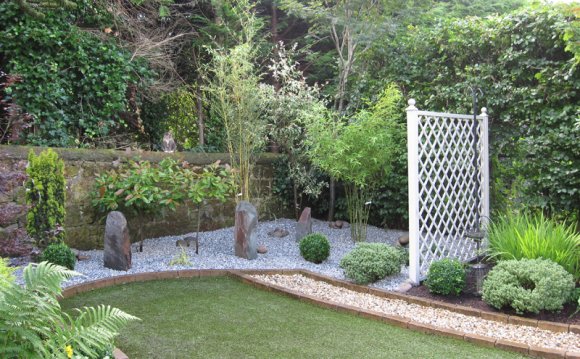
 The American obsession with low maintenance landscapes is a problem. Here’s why.
The American obsession with low maintenance landscapes is a problem. Here’s why.
A low maintenance landscape is a rather innocuous request. It is also, of course, an absolutely sensible one. After all, who has the time or resources to pour endless hours into a landscape? Plus, traditional maintenance often focuses on chemical inputs and gas-powered machinery, all of which are bad for the environment. Perhaps low maintenance landscapes are both good for people and the environment, right?
Yes and no. “Low maintenance” is not just an idea, it is an ideology. It is the promise of more for less. As Americans, we still believe cheap, fertile land is our manifest destiny. We deserve bounty without labor, satisfaction without commitment.
 The ideology of low maintenance has received new fervor from advocates of sustainable landscapes. In eco-speak, maintenance is a dirty word. Maintenance means gas-powered machinery, irrigation systems, and petro-chemicals. A low maintenance landscape is natural.
The ideology of low maintenance has received new fervor from advocates of sustainable landscapes. In eco-speak, maintenance is a dirty word. Maintenance means gas-powered machinery, irrigation systems, and petro-chemicals. A low maintenance landscape is natural.
The promise of low maintenance landscapes is an empty one. The very idea that you can do less and have more is a mythology. Landscapes constantly change and require input—lots of it—to look the way we want them to. Lines blur, plants suffer without water, and weeds move in. Nothing stays the same. Even naturalistic and native landscapes require heavy interventions to look natural. In nature, thousands of years of natural selection create relatively stable environments. In our yards, our active engagement is the sine qua non of a garden. The less we do, the worse our yards look.
 |
| "Low maintenance" or just neglect. A perennial garden on the U.S. Mall |
The second problem is that the “low maintenance” dogma prioritizes yards over gardens. Layered planting beds full of trees, shrubs, and perennials are often eliminated (too high maintenance); instead, we opt for the holy triumvirate of the American landscape: lawn, foundation shrubs, and groundcovers. We choose these because their upfront cost is low and we understand how to maintain them. But in reality, these decisions commit us to endless maintenance. We cover our yards with lawns and then must mow, edge, and weed-eat weekly during the growing season. We plant cheap evergreens at our foundations that get too big and require regular pruning to keep them from eating the house. We throw groundcovers in our beds because we want them to cover large areas, then we spend years battling them to keep them in place.
The low maintenance dogma reveals something about our culture: we don’t know how to BE in our landscapes. When someone asks me for “low maintenance, ” what I hear is: “I don’t want to deal with this landscape.” Maintenance is nothing more than gardening, a personal investment into the landscape. I’ve long said that gardening is a relationship with a piece of ground. That relationship is the single most rewarding aspect of gardening. If the act of gardening is a relationship, then low maintenance gardening is code for “let’s just be friends.” Or “I’m just not that into you.” Low maintenance is permission to disengage, pull away, and let go. When we do that, our landscapes suffer. And so do we.
YOU MIGHT ALSO LIKE












